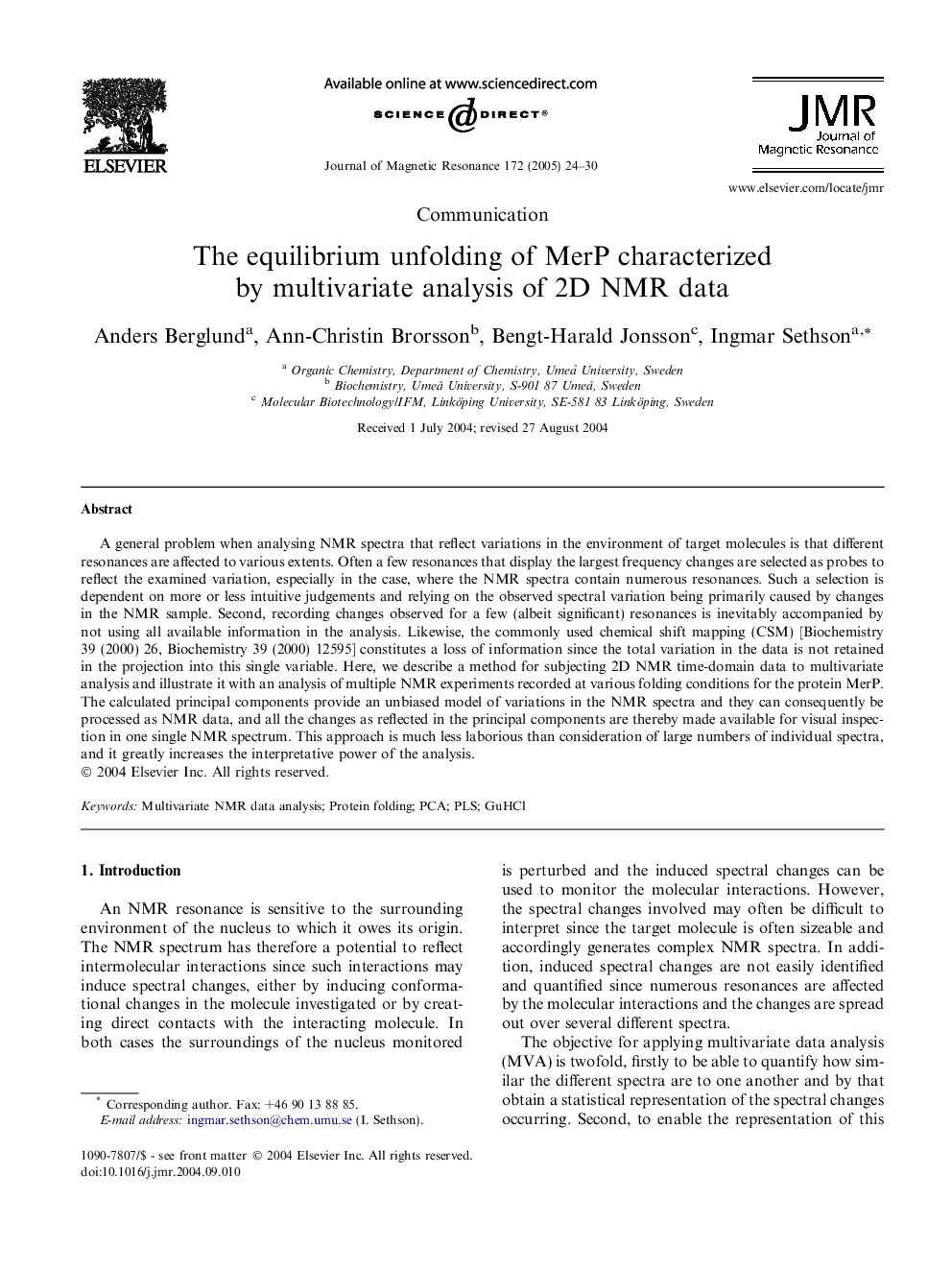| Article ID | Journal | Published Year | Pages | File Type |
|---|---|---|---|---|
| 9587598 | Journal of Magnetic Resonance | 2005 | 7 Pages |
Abstract
A general problem when analysing NMR spectra that reflect variations in the environment of target molecules is that different resonances are affected to various extents. Often a few resonances that display the largest frequency changes are selected as probes to reflect the examined variation, especially in the case, where the NMR spectra contain numerous resonances. Such a selection is dependent on more or less intuitive judgements and relying on the observed spectral variation being primarily caused by changes in the NMR sample. Second, recording changes observed for a few (albeit significant) resonances is inevitably accompanied by not using all available information in the analysis. Likewise, the commonly used chemical shift mapping (CSM) [[1], [2]] constitutes a loss of information since the total variation in the data is not retained in the projection into this single variable. Here, we describe a method for subjecting 2D NMR time-domain data to multivariate analysis and illustrate it with an analysis of multiple NMR experiments recorded at various folding conditions for the protein MerP. The calculated principal components provide an unbiased model of variations in the NMR spectra and they can consequently be processed as NMR data, and all the changes as reflected in the principal components are thereby made available for visual inspection in one single NMR spectrum. This approach is much less laborious than consideration of large numbers of individual spectra, and it greatly increases the interpretative power of the analysis.
Keywords
Related Topics
Physical Sciences and Engineering
Chemistry
Physical and Theoretical Chemistry
Authors
Anders Berglund, Ann-Christin Brorsson, Bengt-Harald Jonsson, Ingmar Sethson,
